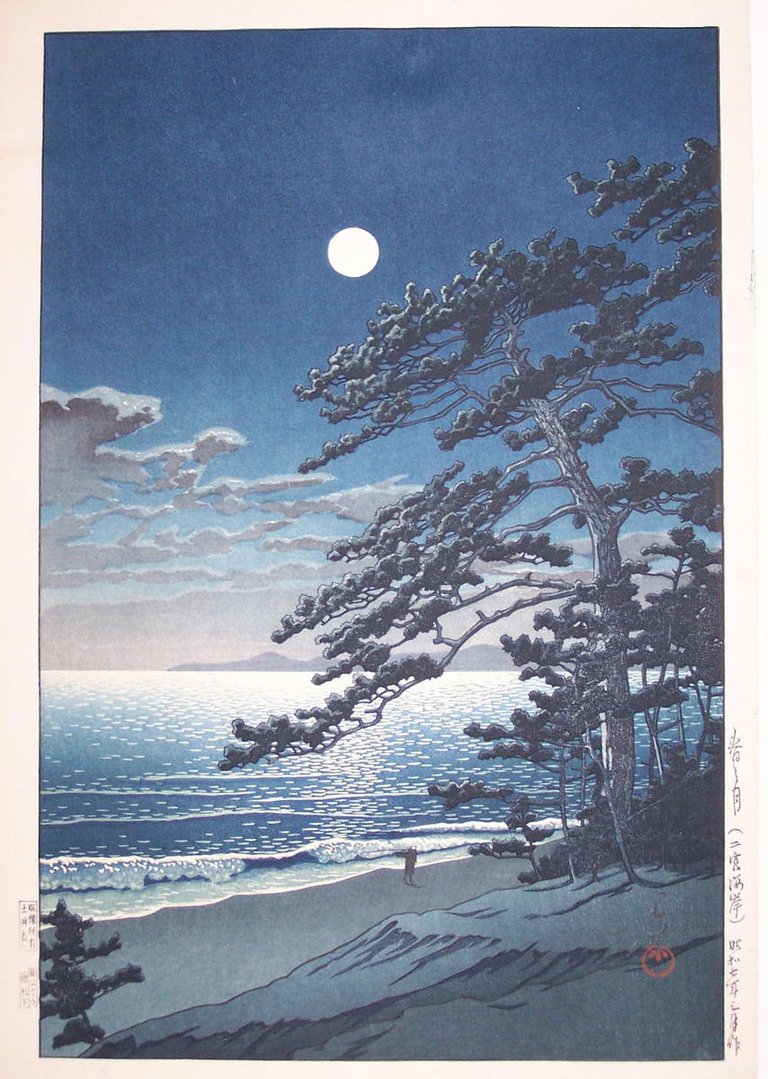A week ago was the second full moon of spring by the traditional reckoning. Looking at it put me in a reflective mood. Some years ago, Sumiko Ikeda may have been in a similar mood after watching one. She wrote:
hatsukoi no ato no nagaiki haru mangetsu
a long life
the full moon of spring
—Sumiko Ikeda


When we think of the full moon, we think of autumn. The autumn moon, noted for its clarity and brilliance, often overshadows the softer allure of the spring full moon. However, the spring moon, veiled in a gentle haze due to the increased moisture of the season, carries its own ephemeral beauty. This softer, more diffuse glow invites a contemplation akin to the transition from the fervent passions of youth to the deeper, more reflective appreciation of life's complexity and beauty in maturity.
Sumiko Ikeda's haiku beautifully captures this journey, using the spring moon as a poignant symbol for the serene and reflective qualities acquired through the experiences of a long life, following the initial intensity of first love.
Ikeda is not so well-known in the West. Her haiku have a somewhat surreal quality that gives them a freshness lacking in more traditional haiku. She is known for using colloquial and often direct language, adding to her freshness and helping her stand out from other Japanese haiku poets.
❦
 |
David LaSpina is an American photographer and translator lost in Japan, trying to capture the beauty of this country one photo at a time and searching for the perfect haiku. He blogs here and at laspina.org. Write him on Twitter or Mastodon. |
That is, me! If you like this translation, feel free to use it. Just credit me. Also link here if you can. ↩


